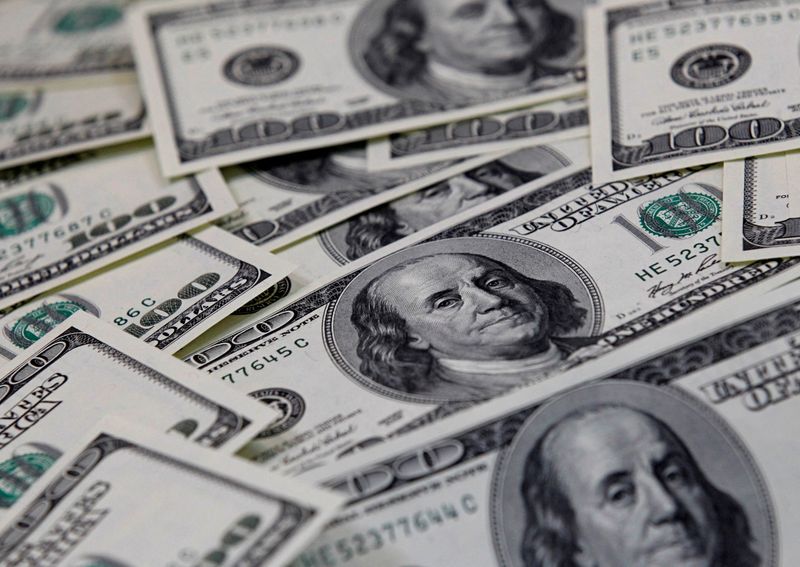Dollar gains as U.S. spending points to rate hikes; Aussie tumbles
2022.11.17 04:21
[ad_1]

© Reuters. FILE PHOTO: U.S. one hundred dollar notes are seen in this picture illustration taken in Seoul February 7, 2011. REUTERS/Lee Jae-Won/File Photo
By Tom Westbrook and Kevin Buckland
SINGAPORE (Reuters) – The dollar rebounded on Thursday as strong U.S. retail data cast doubt on the recent narrative that inflation is in retreat and U.S. interest rates need not rise too much further.
The risk-sensitive tumbled as Hong Kong’s led a tech-driven slide in Asian equities.
U.S. data overnight showed October retail sales rose 1.3%, compared with economist expectations for 1.0%, a healthy signal but one that dented hopes for a pause in rate increases.
“Markets have positioned for the Fed to pivot (but) the U.S. retail sales data very much challenges that narrative,” said Commonwealth Bank of Australia (OTC:) currency strategist Kim Mundy. “The U.S. economy is driven by the consumer and if the consumer is still spending, it suggests it’s going to take inflation longer to ease.”
The , which measures the currency against six major peers, gained 0.18% to 106.46, recovering from a drop a three-month low of 105.30 on Tuesday following cooler producer price data. It is up 11% this year.
Hawkish remarks from Federal Reserve officials overnight also put some cold water on hopes for a dovish Fed shift, with San Francisco Fed President Mary Daly – until recently one of the most dovish officials – saying a pause was off the table.
Kansas City Fed President Esther George told the Wall Street Journal that policymakers must be “careful not to stop too soon” on rate increases and that avoiding a recession might be difficult.
The Treasury market is indicating a slowdown is expected, with 10-year U.S. government bonds yielding 67 basis points less than two-year bonds and that gap nearing levels last reached in 2000. [US/]
Despite the bout of dollar strength though, there is a strong possibility the currency has already peaked, said Rob Carnell, an economist at ING in Hong Kong.
“In order to think that there is much more dollar upside, you really have to anticipate there is going to be some tightening that we haven’t expected … and that somewhere in all of this there’s a much bigger stock correction, which could send us back into a significantly risk-off mode that we’ll want to just buy all things dollar again,” he said.
Meanwhile, the Aussie dollar slumped 0.4% to $0.6715 as regional equities retreated, and failed to garner support from stronger-than-expected local jobs data.
The euro slipped 0.13% to $1.03765, reversing earlier gains from easing tension over a missile blast in Poland, with NATO saying it was a stray fired by Ukraine’s air defences and not a Russian strike.
Sterling eased 0.23% to $1.18855, while the yen was more resilient, trading little changed at 139.50 per dollar.
Later on Thursday the British finance minister is due to provide a budget update, with markets focused on what the timing of government spending cuts might mean for inflation and rates.
Comments from a number of Fed and other central bank officials will also be closely watched.
[ad_2]
Source link








